新書推薦:
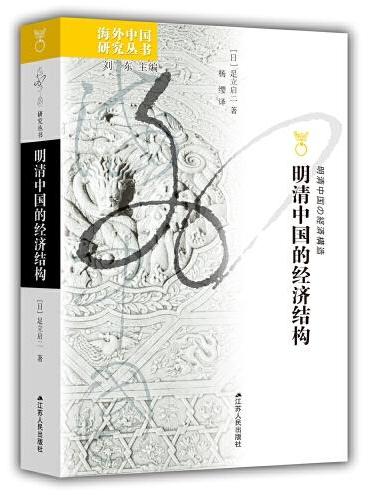
《
海外中国研究·明清中国的经济结构
》
售價:NT$
717.0
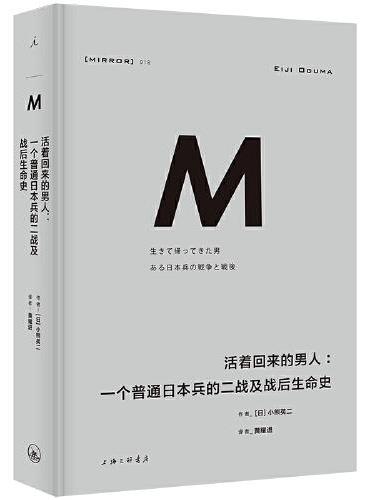
《
理想国译丛018:活着回来的男人:一个普通日本兵的二战及战后生命史(2024版)
》
售價:NT$
515.0
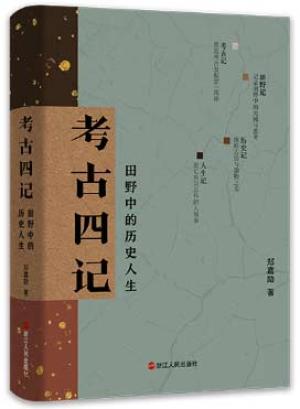
《
考古四记:田野中的历史人生
》
售價:NT$
493.0
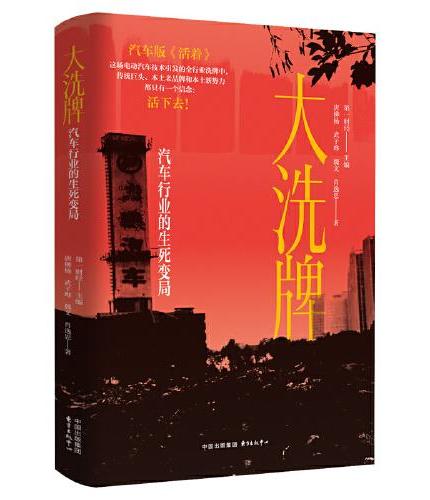
《
大洗牌
》
售價:NT$
437.0
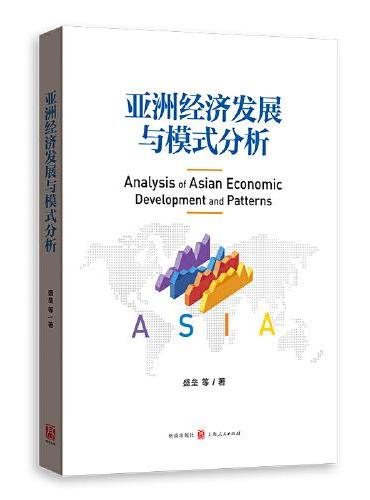
《
亚洲经济发展与模式分析
》
售價:NT$
498.0

《
零基础制作栩栩如生的立体纸艺花
》
售價:NT$
274.0
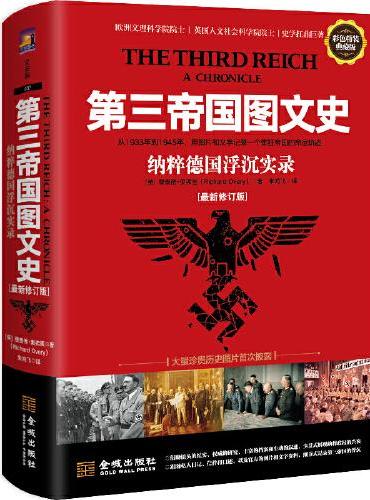
《
第三帝国图文史(修订版):纳粹德国浮沉实录(彩色精装典藏版)
》
售價:NT$
941.0
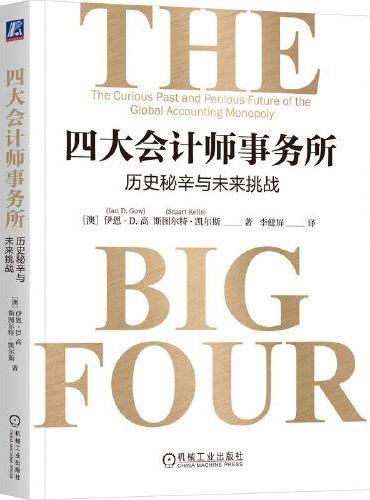
《
四大会计师事务所:历史秘辛与未来挑战
》
售價:NT$
386.0
|
| 編輯推薦: |
|
高温超导体是近些年来凝聚态物理研究,乃至整个物理学研究方面的最大热门之一。对于铜氧化物高温超导体的研究已经产生了很多令人惊异的结果,铁基超导的发现又显示了高温超导更加丰富的内涵。《基于铁砷化合物的高Tc超导体(英文影印版)》作为铁砷化合物高温超导体的专著,对于已经在这一领域或想进入这一领域工作的研究人员是难得的参考书。
|
| 內容簡介: |
《基于铁砷化合物的高Tc超导体(英文影印版)》研究了一类新的铁基高温超导体的物理特性和电子结构。无论其化学组分和晶体结构有何不同,这些化合物都表现出了相似的物理特性。这归因于铁砷层中的电子载体和这些载体与磁序的相互作用。对于这种材料的巨大兴趣源于对其应用前景的高度期待。本书提供了对这一材料的研究的完整图像,包括已有的理论模型和电子结构研究。
《基于铁砷化合物的高Tc超导体(英文影印版)》读者对象为本领域的研究者以及对材料科学感兴趣的研究生。
|
| 關於作者: |
|
俄伊久莫夫(Y. Izyumov),俄罗斯科学院教授。
|
| 目錄:
|
1 Introduction . . . . . . . . . . . . . . . . . . . . . . . . . . . . . . . . . . . . . . . . . . . . . . . . . . . . . . . . . . . . . . . . . . . . 1
2 Compounds of the ReOFeAs Type . . . . . . . . . . . . . . . . . . . . . . . . . . . . . . . . . . . . . . . . . . . 5
2.1 Crystallochemistry and Basic Physical Properties
of Doped Compounds.. . . . . . . . . . . . . . . . . . . . . . . . . . . . . . . . . . . . . . . . . . . . . . . . . . . . 5
2.1.1 Crystal Structure . . . . . . . . . . . . . . . . . . . . . . . . . . . . . . . . . . . . . . . . . . . . . . . . . . 5
2.1.2 Electron Doping . . . . . . . . . . . . . . . . . . . . . . . . . . . . . . . . . . . . . . . . . . . . . . . . . . 5
2.1.3 Hole Doping . . . . . . . . . . . . . . . . . . . . . . . . . . . . . . . . . . . . . . . . . . . . . . . . . . . . . . 8
2.1.4 Substitutions on the Fe Sublattice . . . . . . . . . . . . . . . . . . . . . . . . . . . . . . . . 9
2.1.5 Superconducting Transition Temperature . . . . . . . . . . . . . . . . . . . . . . . 11
2.1.6 Critical Fields . . . . . . . . . . . . . . . . . . . . . . . . . . . . . . . . . . . . . . . . . . . . . . . . . . . . . 13
2.1.7 Effect of Pressure on the Tc . . . . . . . . . . . . . . . . . . . . . . . . . . . . . . . . . . . . . . 14
2.2 Magnetic Properties .. . . . . . . . . . . . . . . . . . . . . . . . . . . . . . . . . . . . . . . . . . . . . . . . . . . . . . 18
2.2.1 Magnetic Structure.. . . . . . . . . . . . . . . . . . . . . . . . . . . . . . . . . . . . . . . . . . . . . . . 18
2.2.2 Theoretical Explanation of Long-Range Magnetic
Ordering in ReOFeAs. . . . . . . . . . . . . . . . . . . . . . . . . . . . . . . . . . . . . . . . . . . . . 20
2.2.3 Phase Diagrams .. . . . . . . . . . . . . . . . . . . . . . . . . . . . . . . . . . . . . . . . . . . . . . . . . . 24
2.2.4 Magnetic Fluctuations . . . . . . . . . . . . . . . . . . . . . . . . . . . . . . . . . . . . . . . . . . . . 27
2.3 Electronic Structure .. . . . . . . . . . . . . . . . . . . . . . . . . . . . . . . . . . . . . . . . . . . . . . . . . . . . . . 28
2.3.1 Stoichiometric Compounds . . . . . . . . . . . . . . . . . . . . . . . . . . . . . . . . . . . . . . 28
2.3.2 The Role of Magnetic Ordering and Doping . . . . . . . . . . . . . . . . . . . . 34
2.3.3 Experimental Studies of the Fermi Surface. . . . . . . . . . . . . . . . . . . . . . 38
2.4 Symmetry of the Superconducting Order Parameter . . . . . . . . . . . . . . . . . . . . 41
2.4.1 Experimental Methods of Determining
the Order Parameter . . . . . . . . . . . . . . . . . . . . . . . . . . . . . . . . . . . . . . . . . . . . . . 41
2.4.2 Nuclear Magnetic Resonance . . . . . . . . . . . . . . . . . . . . . . . . . . . . . . . . . . . . 42
2.4.3 Point-Contact Andreev Reflection . . . . . . . . . . . . . . . . . . . . . . . . . . . . . . . 46
2.4.4 Tunnel and Photoemission Spectroscopies
STS, PES, ARPES . . . . . . . . . . . . . . . . . . . . . . . . . . . . . . . . . . . . . . . . . . . . . . 53
3 Compounds of the AFe2As2 A D Ba,Sr,Ca Type. . . . . . . . . . . . . . . . . . . . . . . . . . 57
3.1 Crystal and Electronic Structure.. . . . . . . . . . . . . . . . . . . . . . . . . . . . . . . . . . . . . . . . . 57
3.1.1 Crystal Structure . . . . . . . . . . . . . . . . . . . . . . . . . . . . . . . . . . . . . . . . . . . . . . . . . . 57
3.1.2 LDA Calculations of the Electronic Structure .. . . . . . . . . . . . . . . . . . 58
3.1.3 Experimental Studies of the Fermi Surface. . . . . . . . . . . . . . . . . . . . . . 63
3.1.4 Sr3Sc2O5Fe2As2 and Other Similar Compounds .. . . . . . . . . . . . 69
3.2 Superconductivity .. . . . . . . . . . . . . . . . . . . . . . . . . . . . . . . . . . . . . . . . . . . . . . . . . . . . . . . . 72
3.2.1 Doping . . . . . . . . . . . . . . . . . . . . . . . . . . . . . . . . . . . . . . . . . . . . . . . . . . . . . . . . . . . . 72
3.2.2 Coexistence of Superconductivity and Magnetism. . . . . . . . . . . . . . 77
3.2.3 Effect of Pressure . . . . . . . . . . . . . . . . . . . . . . . . . . . . . . . . . . . . . . . . . . . . . . . . . 79
3.2.4 Symmetry of the Superconducting Order Parameter . . . . . . . . . . . . 88
3.2.5 Measurements on the Josephson Contacts . . . . . . . . . . . . . . . . . . . . . . . 94
3.2.6 Critical Fields . . . . . . . . . . . . . . . . . . . . . . . . . . . . . . . . . . . . . . . . . . . . . . . . . . . . . 96
3.3 Magnetism. . . . . . . . . . . . . . . . . . . . . . . . . . . . . . . . . . . . . . . . . . . . . . . . . . . . . . . . . . . . . . . . . 98
3.3.1 Stoichiometric Compounds . . . . . . . . . . . . . . . . . . . . . . . . . . . . . . . . . . . . . . 98
3.3.2 Doped Compounds . . . . . . . . . . . . . . . . . . . . . . . . . . . . . . . . . . . . . . . . . . . . . . .102
3.3.3 Magnetic Excitations . . . . . . . . . . . . . . . . . . . . . . . . . . . . . . . . . . . . . . . . . . . . .104
4 Other FeAs-Based Compounds. . . . . . . . . . . . . . . . . . . . . . . . . . . . . . . . . . . . . . . . . . . . . . .109
4.1 Compounds of the FeSe, FeTe Type . . . . . . . . . . . . . . . . . . . . . . . . . . . . . . . . . . . . .109
4.1.1 Superconducting Properties . . . . . . . . . . . . . . . . . . . . . . . . . . . . . . . . . . . . . .109
4.1.2 Unusual Magnetic Properties. . . . . . . . . . . . . . . . . . . . . . . . . . . . . . . . . . . . .112
4.1.3 Electronic Structure of Stoichiometric Compounds.. . . . . . . . . . . .115
4.1.4 Electronic Structure of Doped Compounds . . . . . . . . . . . . . . . . . . . . .118
4.1.5 Magnetic Structure of FeTe . . . . . . . . . . . . . . . . . . . . . . . . . . . . . . . . . . . . . .120
4.2 Compounds of the LiFeAs Type . . . . . . . . . . . . . . . . . . . . . . . . . . . . . . . . . . . . . . . . .122
4.2.1 Superconductivity.. . . . . . . . . . . . . . . . . . . . . . . . . . . . . . . . . . . . . . . . . . . . . . . .122
4.2.2 Electronic Structure. . . . . . . . . . . . . . . . . . . . . . . . . . . . . . . . . . . . . . . . . . . . . . .123
4.3 Compounds of the AFFeAs AD Sr;Ca Type . . . . . . . . . . . . . . . . . . . . . . . . .126
4.3.1 Primary Experimental Observations . . . . . . . . . . . . . . . . . . . . . . . . . . . . .126
4.3.2 Electronic Structure. . . . . . . . . . . . . . . . . . . . . . . . . . . . . . . . . . . . . . . . . . . . . . .128
5 Theory Models . . . . . . . . . . . . . . . . . . . . . . . . . . . . . . . . . . . . . . . . . . . . . . . . . . . . . . . . . . . . . . . . .131
5.1 General Properties of Compounds from Different Classes
of FeAs-Systems and Corresponding Theory Objectives . . . . . . . . . . . . . . .131
5.1.1 Crystal and Magnetic Structures . . . . . . . . . . . . . . . . . . . . . . . . . . . . . . . . .131
5.1.2 Peculiarities of the Electronic Structure . . . . . . . . . . . . . . . . . . . . . . . . .134
5.1.3 Asymmetry of the ElectronHole Doping . . . . . . . . . . . . . . . . . . . . . . .136
5.1.4 Problems of Symmetry of the Superconducting
Order Parameter . . . . . . . . . . . . . . . . . . . . . . . . . . . . . . . . . . . . . . . . . . . . . . . . . .138
5.1.5 Isotopic Effect . . . . . . . . . . . . . . . . . . . . . . . . . . . . . . . . . . . . . . . . . . . . . . . . . . . .140
5.2 Role of Electron Correlations . . . . . . . . . . . . . . . . . . . . . . . . . . . . . . . . . . . . . . . . . . . .141
5.2.1 Dynamical Mean Field Theory DMFT . . . . . . . . . . . . . . . . . . . . . . . .141
5.2.2 LDACDMFT Calculation for ReOFeAs Compounds . . . . . . . . . .145
5.2.3 LDACDMFT Calculation on an Extended Basis . . . . . . . . . . . . . . .148
5.2.4 Comparison with Experiment . . . . . . . . . . . . . . . . . . . . . . . . . . . . . . . . . . . .152
5.3 A Minimal Two-Orbital Model . . . . . . . . . . . . . . . . . . . . . . . . . . . . . . . . . . . . . . . . . . .158
5.3.1 Formulation of the Model . . . . . . . . . . . . . . . . . . . . . . . . . . . . . . . . . . . . . . . .158
5.3.2 Band Structure of the Spectrum .. . . . . . . . . . . . . . . . . . . . . . . . . . . . . . . . .162
5.3.3 Mean Field Approximation.. . . . . . . . . . . . . . . . . . . . . . . . . . . . . . . . . . . . . .164
5.3.4 Numerical Calculation for Small Clusters . . . . . . . . . . . . . . . . . . . . . . .167
5.4 Multi-Orbital Model . . . . . . . . . . . . . . . . . . . . . . . . . . . . . . . . . . . . . . . . . . . . . . . . . . . . . .170
5.4.1 Formulation of the Model . . . . . . . . . . . . . . . . . . . . . . . . . . . . . . . . . . . . . . . .170
5.4.2 Equations for a Superconductor in the Fluctuation
Exchange FLEX Approximation .. . . . . . . . . . . . . . . . . . . . . . . . . . . . . .171
5.4.3 Properties of Superconductors with the s˙
Symmetry of the Order Parameter . . . . . . . . . . . . . . . . . . . . . . . . . . . . . . .174
5.4.4 Three-OrbitalModel .. . . . . . . . . . . . . . . . . . . . . . . . . . . . . . . . . . . . . . . . . . . . .178
5.5 Detailed Analysis of the 5-Orbital Model. . . . . . . . . . . . . . . . . . . . . . . . . . . . . . . .182
5.5.1 The Hamiltonian of the Model . . . . . . . . . . . . . . . . . . . . . . . . . . . . . . . . . . .182
5.5.2 Spin and Charge Susceptibility . . . . . . . . . . . . . . . . . . . . . . . . . . . . . . . . . .184
5.5.3 Pairing of Electrons via Spin Fluctuations . . . . . . . . . . . . . . . . . . . . . .187
5.5.4 Possible Symmetries of the Superconducting
Order Parameter . . . . . . . . . . . . . . . . . . . . . . . . . . . . . . . . . . . . . . . . . . . . . . . . . .190
5.6 Limit of Weak Coulomb Interaction . . . . . . . . . . . . . . . . . . . . . . . . . . . . . . . . . . . . .194
5.6.1 Renormalization Group Analysis . . . . . . . . . . . . . . . . . . . . . . . . . . . . . . . .194
5.6.2 Equations for Superconducting and Magnetic
Order Parameters . . . . . . . . . . . . . . . . . . . . . . . . . . . . . . . . . . . . . . . . . . . . . . . . .202
5.6.3 Phase Diagram of the Model . . . . . . . . . . . . . . . . . . . . . . . . . . . . . . . . . . . . .205
5.6.4 Peculiarities of the s˙-Superconducting State . . . . . . . . . . . . . . . . . .207
5.7 The Limit of Strong Coulomb Interaction . . . . . . . . . . . . . . . . . . . . . . . . . . . . . . .210
5.7.1 The t _ J1 _ J2-Model . . . . . . . . . . . . . . . . . . . . . . . . . . . . . . . . . . . . . . . . . .210
5.7.2 Superconductivity with Different Order Parameters . . . . . . . . . . . .212
5.7.3 Density of States and Differential Tunnel Conductivity . . . . . . . .215
5.7.4 The Hubbard Model with the Hund''s Exchange . . . . . . . . . . . . . . . .217
5.8 Magnetic Long-Range Order and Its Fluctuations . . . . . . . . . . . . . . . . . . . . . .221
5.8.1 Two Approaches to the Problem . . . . . . . . . . . . . . . . . . . . . . . . . . . . . . . . .221
5.8.2 The Itinerant Model. . . . . . . . . . . . . . . . . . . . . . . . . . . . . . . . . . . . . . . . . . . . . . .224
5.8.3 The Localized Model: Spin Waves. . . . . . . . . . . . . . . . . . . . . . . . . . . . . . .228
5.8.4 The Resonance Mode.. . . . . . . . . . . . . . . . . . . . . . . . . . . . . . . . . . . . . . . . . . . .233
5.8.5 Unified Models . . . . . . . . . . . . . . . . . . . . . . . . . . . . . . . . . . . . . . . . . . . . . . . . . . .240
5.8.6 FeAs-Compounds as Systems with Moderate
Electron Correlations . . . . . . . . . . . . . . . . . . . . . . . . . . . . . . . . . . . . . . . . . . . . .245
5.9 Orbital Ordering. . . . . . . . . . . . . . . . . . . . . . . . . . . . . . . . . . . . . . . . . . . . . . . . . . . . . . . . . . .247
5.9.1 The Spin-Orbital Model . . . . . . . . . . . . . . . . . . . . . . . . . . . . . . . . . . . . . . . . . .247
5.9.2 Phase Diagrams with Spin and Orbital Orderings. . . . . . . . . . . . . . .250
5.9.3 Spectrum of Magnetic Excitations .. . . . . . . . . . . . . . . . . . . . . . . . . . . . . .251
Conclusion . . . . . . . . . . . . . . . . . . . . . . . . . . . . . . . . . . . . . . . . . . . . . . . . . . . . . . . . . . . . . . . . . . . . . . . . . .255
References. . . . . . . . . . . . . . . . . . . . . . . . . . . . . . . . . . . . . . . . . . . . . . . . . . . . . . . . . . . . . . . . . . . . . . . . . . .259
Index . . . . . . . . . . . . . . . . . . . . . . . . . . . . . . . . . . . . . . . . . . . . . . . . . . . . . . . . . . . . . . . . . . . . . . . . . . . . . . . . .277
|
|










